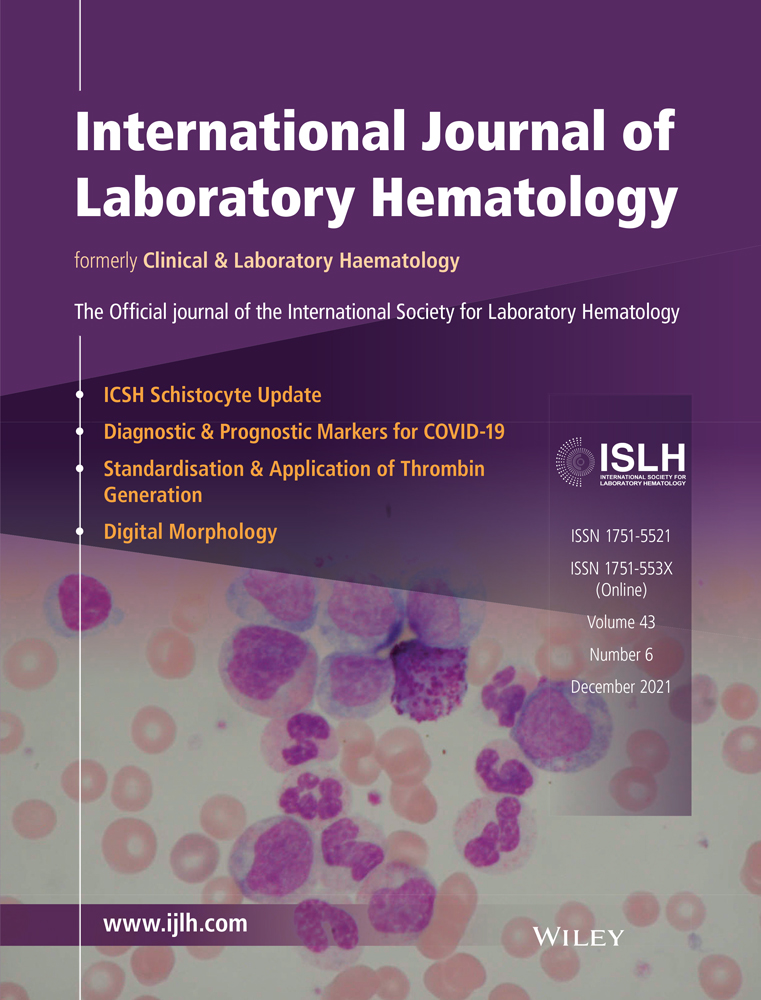Prognostic impacts of peripheral blood erythroblasts after single-unit cord blood transplantation
Yuta Kaito and Takaaki Konuma contributed equally to this work
Abstract
Introduction
The appearance of erythroblasts (EBLs) in peripheral blood occurs in a variety of serious conditions and has been associated with mortality in critically ill patients. However, the incidence, risk factor, and outcomes of EBLs after cord blood transplantation (CBT) remain unclear.
Methods
We have investigated the impact of EBLs on transplant outcomes on 225 adult patients who underwent single-unit CBT at our single institute.
Results
The cumulative incidences of EBL ≥200 × 106/L and EBL ≥1000 × 106/L at 60 days after CBT were 17% and 4%, respectively, detected after a median of 35 days and 36.5 days. Multivariate analysis using erythroblastosis as time-dependent covariates demonstrated the significant association of EBL ≥1000 × 106/L, but not EBL ≥200 × 106/L, with the development of grade III-IV acute graft-versus-host disease (GVHD, hazard ratio [HR]: 18.56; P < .001), higher nonrelapse mortality (HR: 13.38; P < .001), and overall mortality (HR: 4.97; P = .001).
Conclusion
These data suggested that higher levels of EBLs were recognized as a significant risk factor for severe acute GVHD and mortality after single-unit CBT. Higher levels of EBLs may serve as a surrogate marker for poor single CBT outcomes.
CONFLICT OF INTEREST
The authors declare that they have no conflict of interests.
Open Research
DATA AVAILABILITY STATEMENT
The data that support the findings of this study are available from the corresponding author upon reasonable request.




